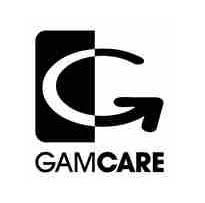Heads-up Poker, where you play only a single opponent in either cash-game of SNG format, is massively popular online. The quick-fire matches, with lower rake, appeal to recreational as well as the high-limit ‘pro’ players. Here we outline the basic strategy considerations for Heads-up Pot-Limit Omaha and highlight the most profitable adjustments for you to make.
There are three main areas to look at, the effect of position, the relative strength of starting hands and reading the patterns and tendencies of your opponents. Understanding these vital factors will give you a great start, finding the fishiest and best site for heads-up Omaha Poker will boost your bankroll considerably (this uniquely detailed analysis of the options for Heads-Up PLO fans is linked again at the end of this article).
In a heads-up poker matches the player with the dealer button posts the small blind, this player will act first before the flop and last on the flop, turn and river betting rounds and is said to ‘have position’ for the hand.
Position is more important heads-up than in a full ring game. At a full table it is more likely someone will have a strong hand, while heads up this is less likely – meaning the player on the button can bet after an opponent has shown weakness, often taking a pot without a strong holding. At a full table it is possible to get ‘sandwiched’ between 2 or more players in the betting – this is not possible heads-up, when you are last you are last!
Omaha Poker starting hand selection is a key skill. In a heads-up PLO game the value of big pairs and high-card hands goes up, while the smaller rundowns (connected cards) lose some value. Since you only have a single opponent the chances of an over-pair winning the pot are greatly increased (along with hands like top 2-pairs) while the chances of getting paid off when you hit a monster on a ragged / low flop are reduced (as it is less likely your opponent has a hand to call a big bet with as you will hold many of the key cards). As in all Omaha games, coordinated hands are the key, double suited connected hands can be played strongly in addition to the high pairs with help.
The single biggest factor in winning heads-up matches is to read the betting patterns of your opponents. At the lowest levels ($20 and under) these are usually obvious if you know what to look out for, here are some examples of the questions you should be asking:
– How does your opponent play a weak draw (non-nut flush for example) do they bet strongly or check behind?
– Does this opponent lead into the pot with a bet when they flop trips or better?
– What does a small bet mean after the flop, and what about a larger one?
– Will this opponent bluff on the river with a busted draw?
– Will this opponent check-raise? Does this indicate a draw or a weak / strong made hand?
– How does this opponent react to a small bet after the flop, what about a pot sized bet?
There are many individual factors to look for, ask yourself whether your opponent is tricky or straightforward and try and judge what different bet sizes mean. As you play more this will become second nature – as will knowing which pots to take away and which ones to fight for when your opponent raises.
Heads-up PLO games can be very profitable if you understand how to adapt your play to the opponent and how to use position and choose starting hands.




